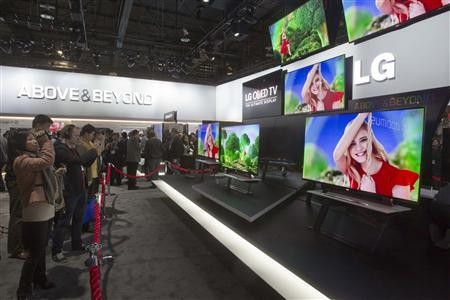The new OLED (organic light-emitting diode) TV from LG Electronics Inc. also weighs less than a 13-inch MacBook Pro. In fact, the tiny TV's weight is only 1.9 kg (4.2 lbs.) according to CNET.
A special magnetic mat is required to wall-mount the LG TV. That is due to it being super thin and very lightweight.
In an LG press release, the tech company said that OLED represents "groundbreaking technology." This is true not only for LG, but also for the HDTV industry.
For now, the ultra-thin screen is only a concept TV. The super-slim OLED panels will likely be commercially available years from now.
However, the LG TV definitely shows the possibilities of OLED technology. Electrical engineers are able to produce high-definition TVs that are flexible, lightweight, and thin. LG Display's OLED department plans to boost OLED production during this year.
The TV's displays are produced by carbon-based organic materials, according to Value Walk. Fluorescent backlighting needed in traditional TVs is absent, because the organic materials are self-lit.
LG, Samsung, and Sony already have several OLED TV models on the HDTV market. However, their price tags are sky-high.
Some U.S. Department of Energy analysts have forecasted that the prices of large OLED displays will stay high during the next five years. When the prices drop they will become more practical in the HDTV market.
Tech analysts believe that OLED tech will have a bigger effect in sectors such as smartwatches, tablets, and digital cameras. One of the key benefits is that it can display better brightness and more contrast than today's LCD displays can.
LG is the world's first company to mass-produce large- screen OLED TVs. It has projected that it will sell 600,000 OLED TV panels this year.



























